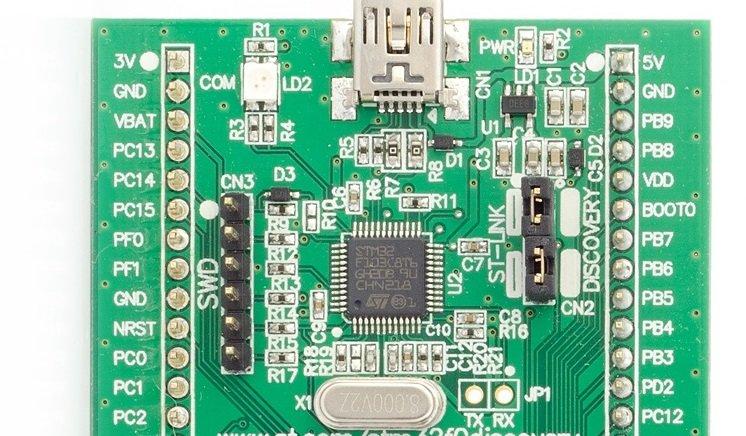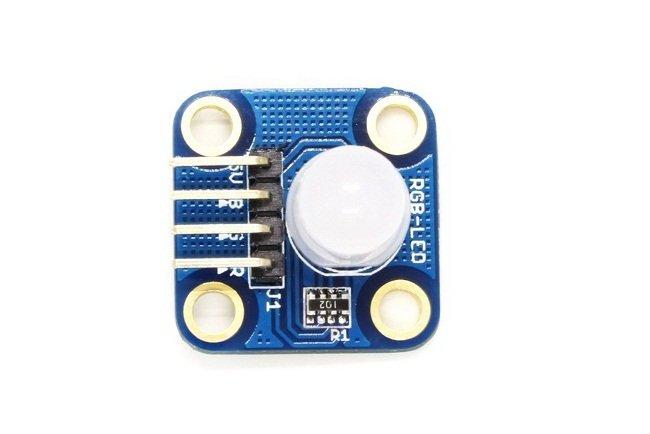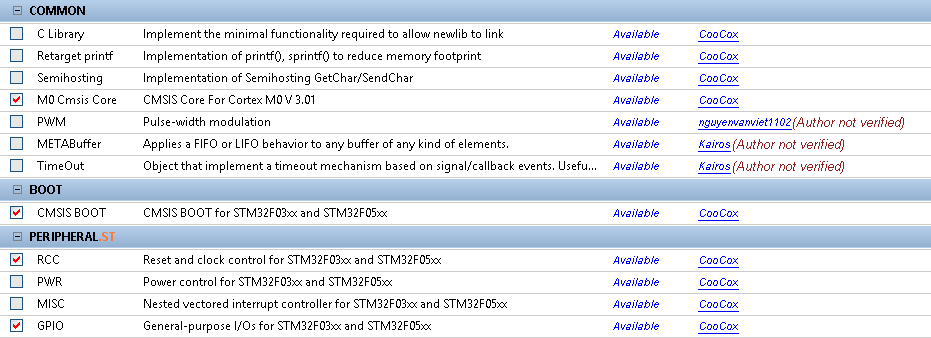In this example we will do a simple flashing led project for a stm32f0discovery board, I used Coocox IDE 1.7.8. I did try the newer version and didn’t really like the way you selected a chip and imported components via the repository.
This example will involve connecting a common anode RGB led to the stm32f0discovery and then we will flash the red, green and blue individually. Here is a picture of the board, we will connect the following
command anode – 3v.
RED – PC0
GREEN – PC1
BLUE – PC2

Here is a typical RGB led module that I use in many simple beginner projects, I find it easier than messing about with breadboards.

rgb led module
Code
As stated I used Coocox for this, I will be trying various compilers such as MDK and IARs offerings eventually.In this example I pulled in the RCC, GPIO, CMSIS boot and MO CMSIS core. You can see this in the screenshot below

coocox repository
There are a few comments in the code, I’ll go through some of this in more detail in a later tutorial
[codesyntax lang=”cpp”]
/**
/*
* @Project: RGB Led example
* @Microntroller: STM32F030R8T6
*/
#include <stdint.h>
#include <system_stm32f0xx.h>
#include <stm32f0xx_gpio.h>
#include <stm32f0xx_rcc.h>
int main(void)
{
GPIO_InitTypeDef InitGpio;
unsigned int i = 0;
// Initialises the system clock
SystemInit();
// Enables the clock for GPIOC
RCC_AHBPeriphClockCmd(RCC_AHBPeriph_GPIOC, ENABLE);
// Configures the GPIOC pin8 and pin9, since leds are connected
// to PC8 and PC9 of GPIOC
InitGpio.GPIO_Pin = (GPIO_Pin_0 | GPIO_Pin_1 | GPIO_Pin_2);
InitGpio.GPIO_Mode = GPIO_Mode_OUT;
InitGpio.GPIO_Speed = GPIO_Speed_Level_1;
InitGpio.GPIO_OType = GPIO_OType_PP;
InitGpio.GPIO_PuPd = GPIO_PuPd_NOPULL;
// Initialises the GPIOC
GPIO_Init(GPIOC, &InitGpio);
GPIO_SetBits(GPIOC, 0xFF); //common anode led - so outputs high
while(1)
{
// Turn ON the Red Led
GPIO_ResetBits(GPIOC, (GPIO_Pin_0));
// Delay
for (i = 0; i < 0x0FFFFF; i++);
// Turn OFF the Led
GPIO_SetBits(GPIOC, (GPIO_Pin_0));
// Delay
for (i = 0; i < 0x0FFFFF; i++);
// Turn ON the Green Led
GPIO_ResetBits(GPIOC, (GPIO_Pin_1));
// Delay
for (i = 0; i < 0x0FFFFF; i++);
// Turn OFF the Led
GPIO_SetBits(GPIOC, (GPIO_Pin_1));
// Delay
for (i = 0; i < 0x0FFFFF; i++);
// Turn ON the Blue Led
GPIO_ResetBits(GPIOC, (GPIO_Pin_2));
// Delay
for (i = 0; i < 0x0FFFFF; i++);
// Turn OFF the Led
GPIO_SetBits(GPIOC, (GPIO_Pin_2));
// Delay
for (i = 0; i < 0x0FFFFF; i++);
}
}
[/codesyntax]
With a bit of luck you will see your RGB led cycling through the three main colours


